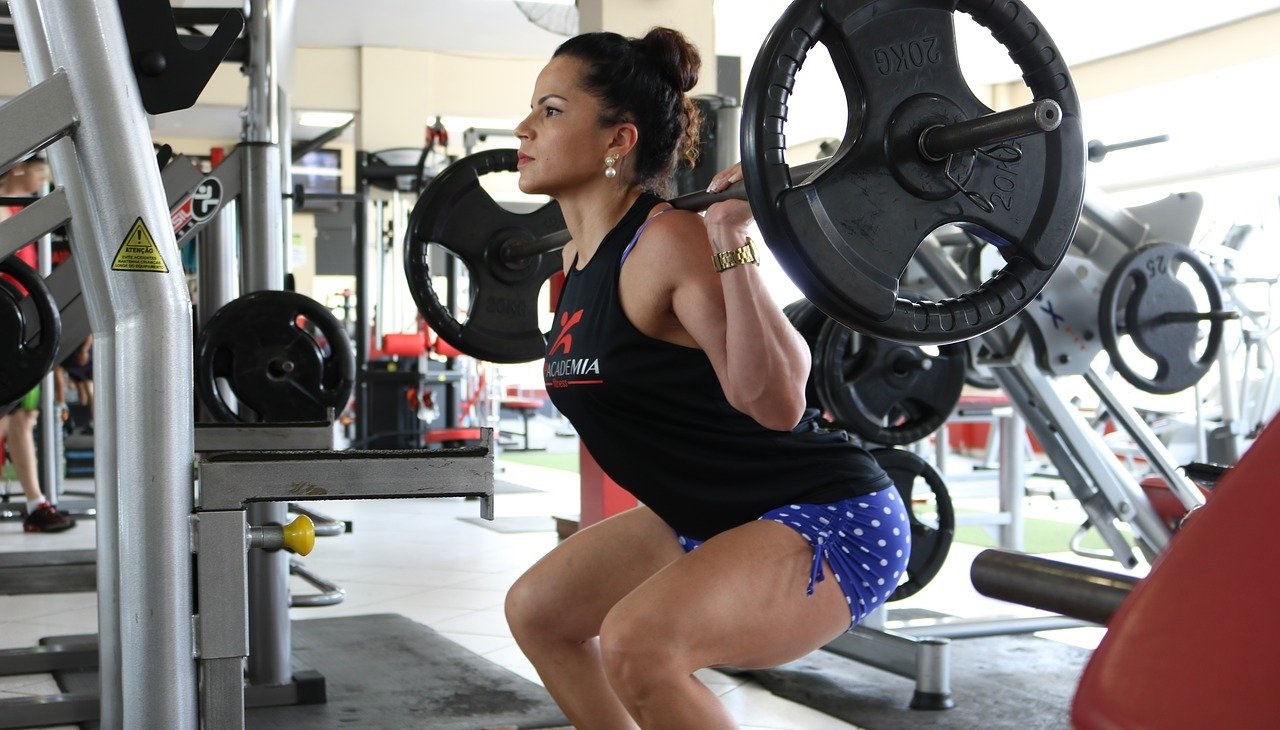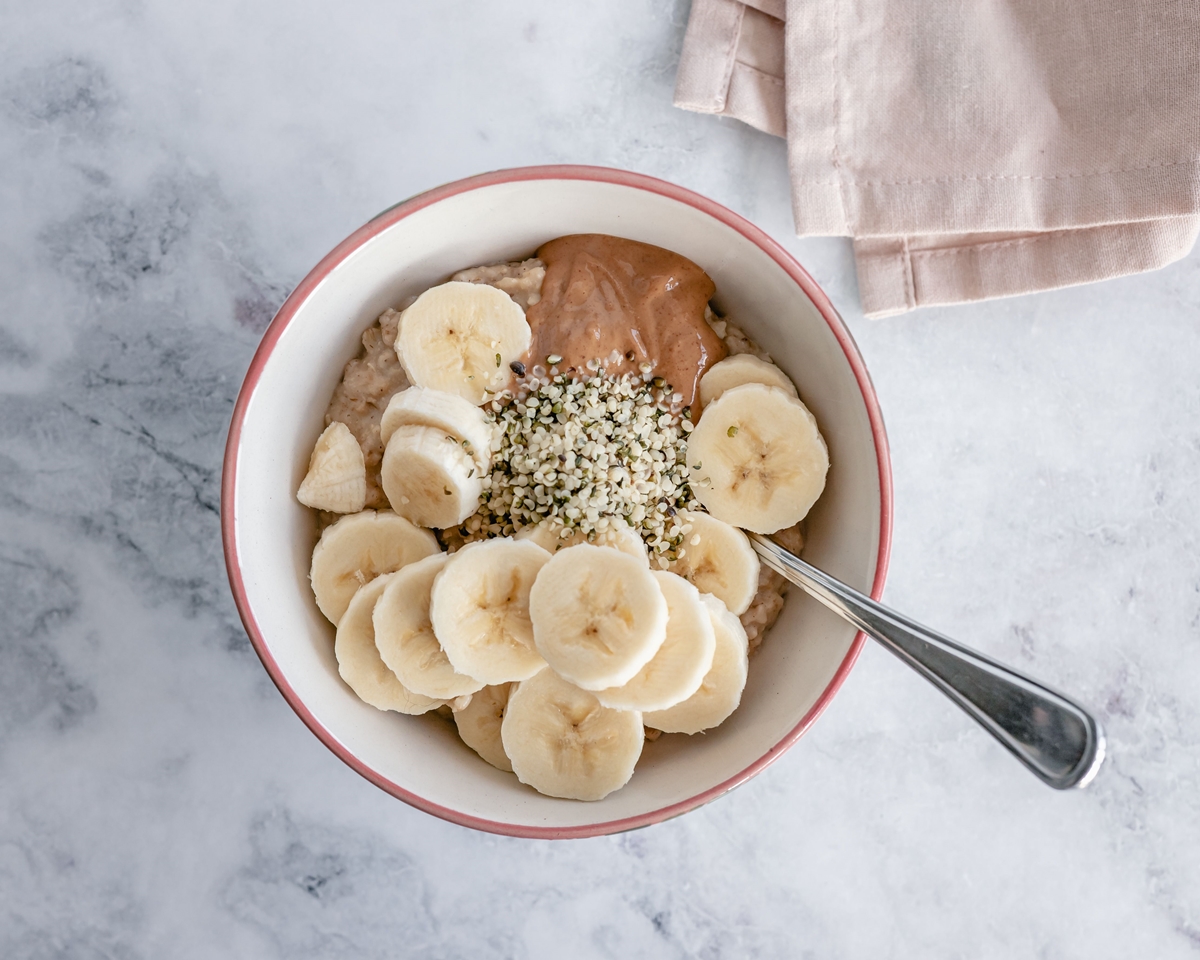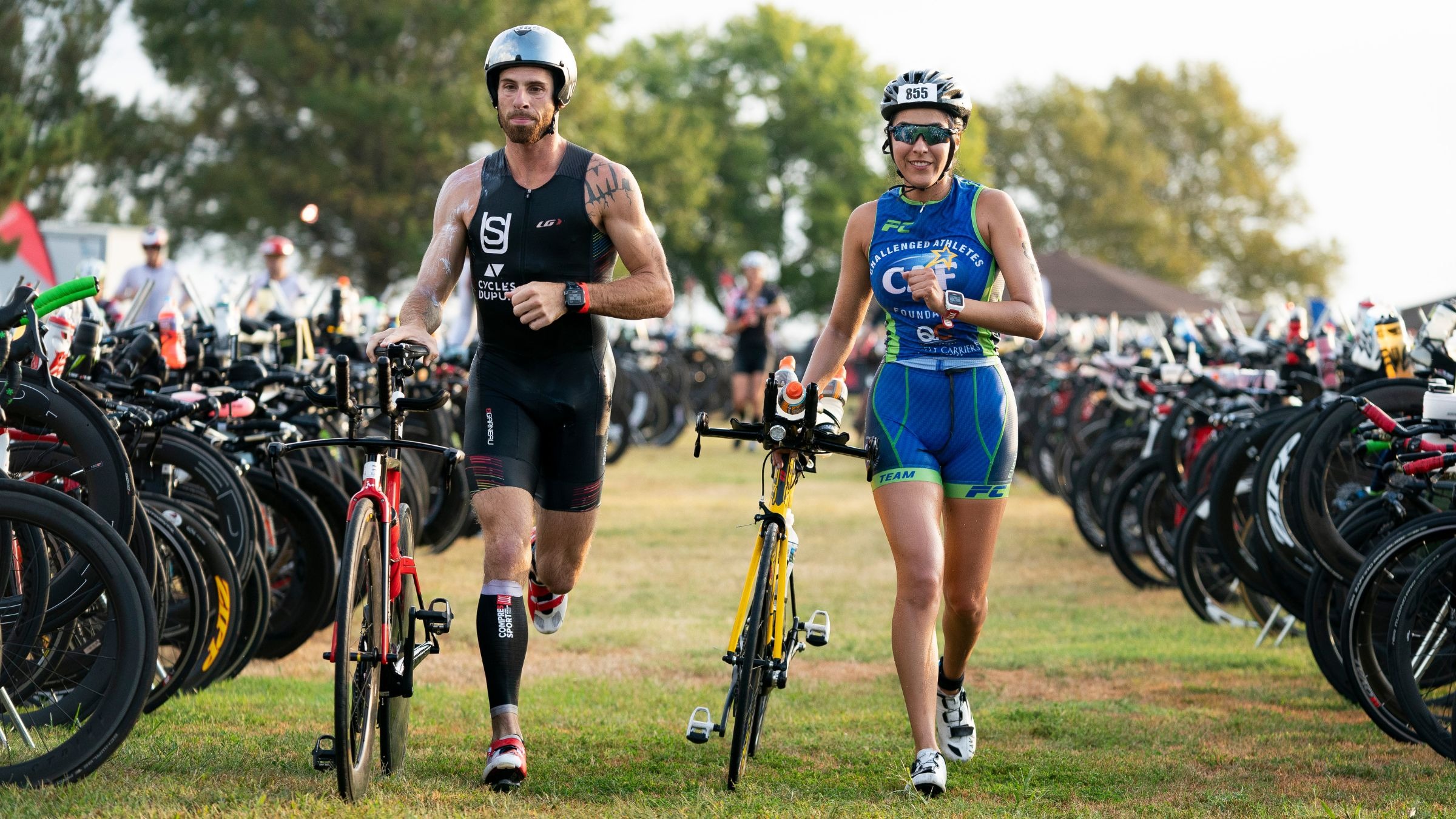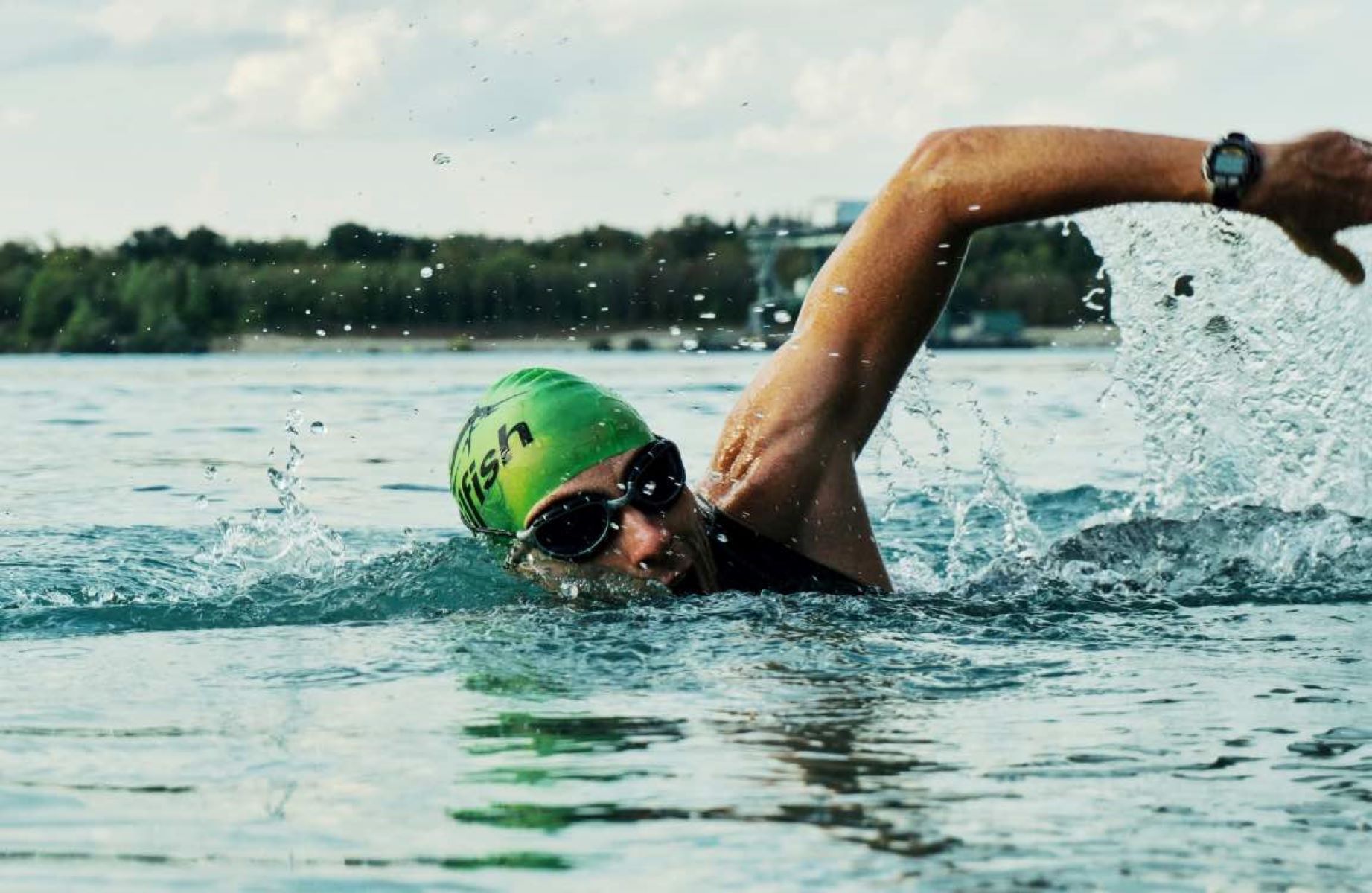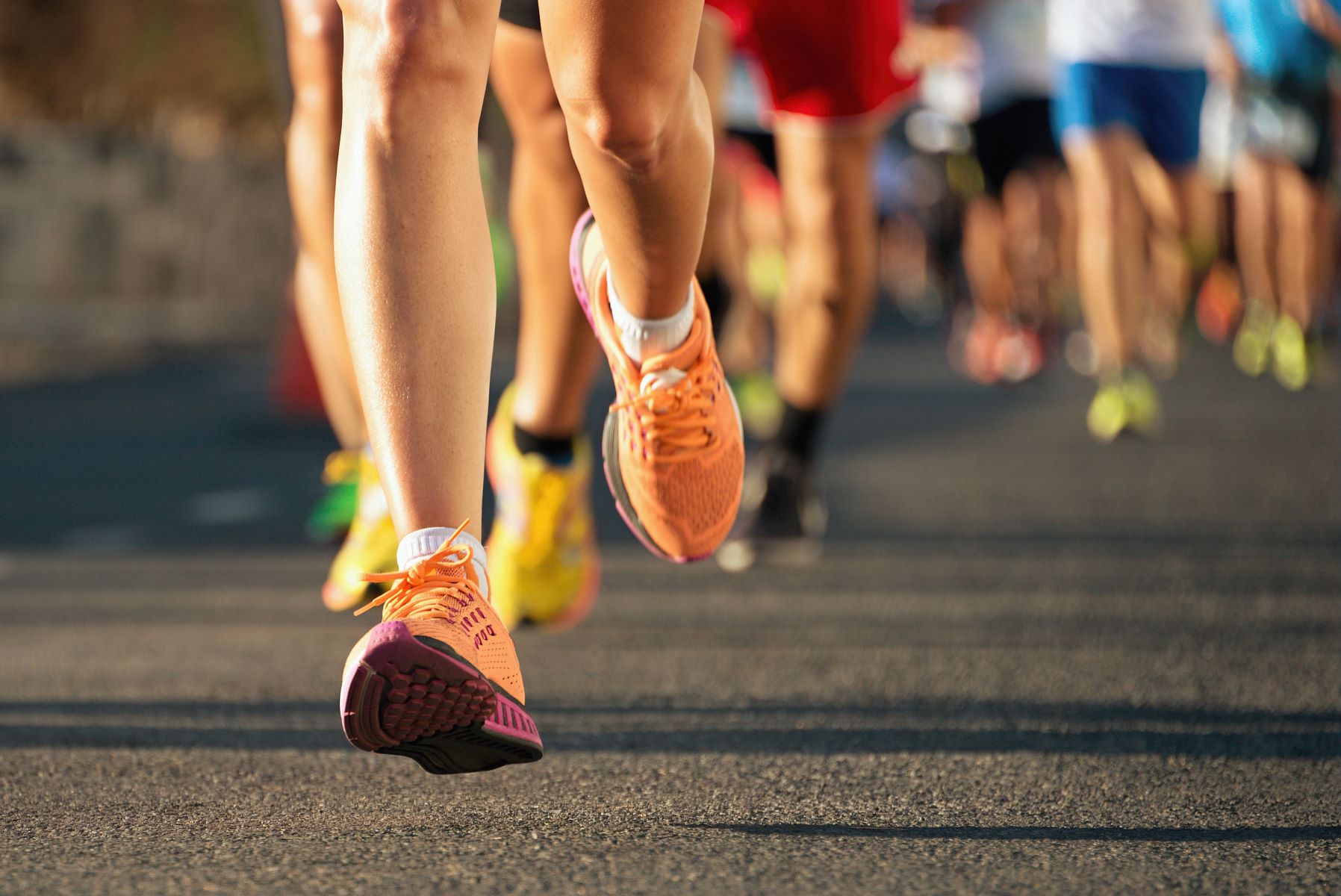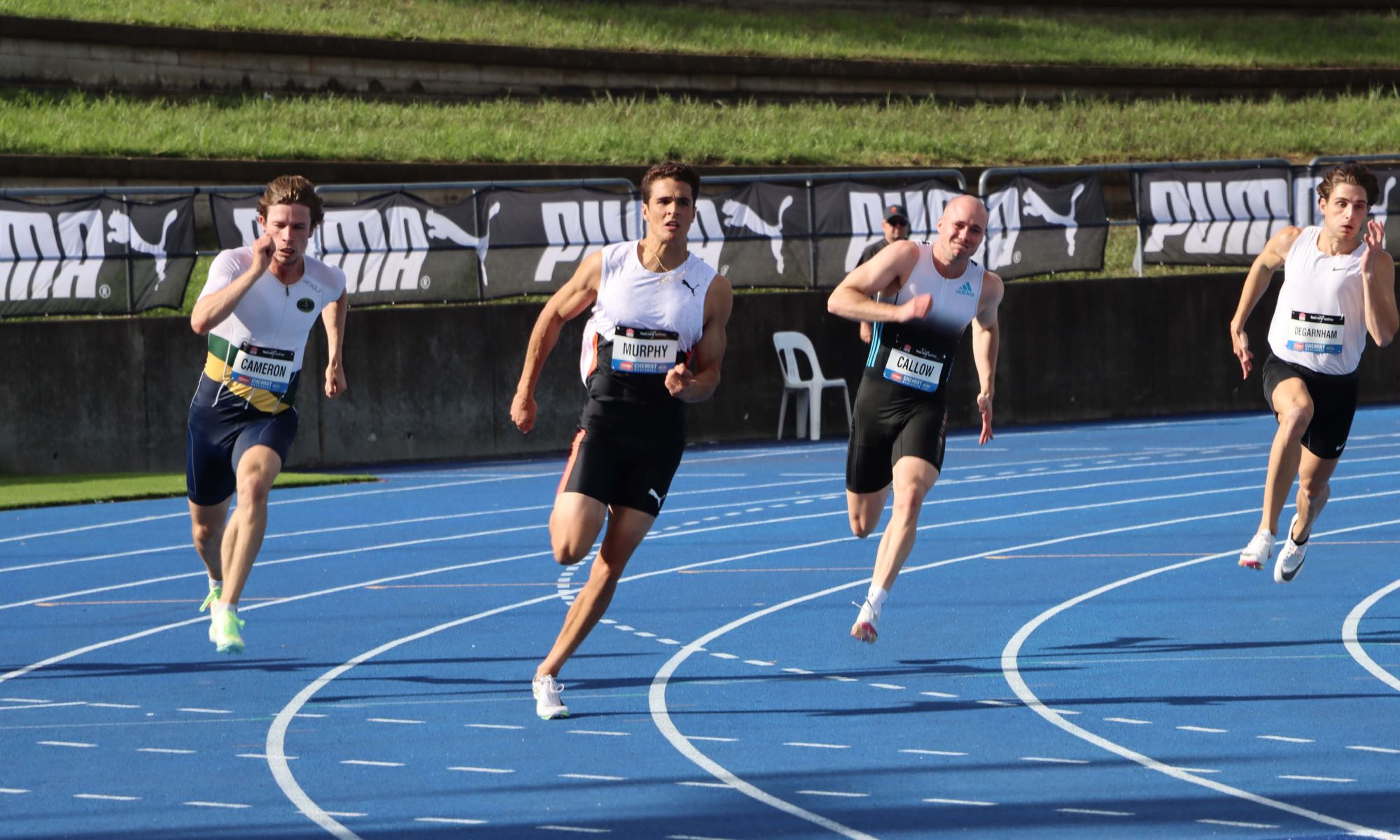Home>Misc>Featured>Why Is It A Challenge To Maintain Hydration During Endurance Events?


Featured
Why Is It A Challenge To Maintain Hydration During Endurance Events?
Modified: August 19, 2023
Discover why staying hydrated can be a struggle during endurance events and learn how to overcome this challenge. Featured tips and strategies to maintain optimal hydration levels.
Introduction
Participating in endurance events such as marathons, triathlons, or long-distance cycling races is a challenging endeavor that requires immense physical stamina and mental resilience. One crucial aspect of completing these events successfully is maintaining optimal hydration levels throughout.
Hydration plays a vital role in our overall well-being and is particularly crucial for athletes engaged in endurance activities. It affects our performance, body temperature regulation, and overall health. However, ensuring adequate hydration during endurance events is often a significant challenge that athletes face.
In this article, we will explore the reasons why maintaining proper hydration can be so challenging during endurance events. We will delve into the factors that affect hydration levels, the impact of dehydration on performance, and the common challenges athletes encounter in maintaining adequate hydration. Furthermore, we will discuss strategies and tips to help athletes overcome these challenges and perform at their best.
By understanding the difficulties associated with hydration during endurance events and learning effective strategies to address them, athletes can improve their performance, avoid detrimental health effects, and maximize their chances of crossing the finish line successfully.
Understanding Hydration
Before delving into the challenges of maintaining hydration during endurance events, it’s important to understand what hydration is and why it is essential for our bodies. Hydration refers to the process of replenishing fluids in our bodies to maintain optimal function.
The human body is comprised of approximately 60% water, highlighting its critical role in various bodily functions. Water plays a key part in regulating body temperature, lubricating joints, transporting nutrients and oxygen to cells, and eliminating waste products. In the context of endurance events, hydration becomes even more crucial due to the increased demands placed on the body.
During endurance activities, our bodies undergo significant physical stress, resulting in increased sweating and fluid loss. This loss of fluids, if not adequately replenished, can have detrimental effects on performance and overall well-being. As such, maintaining proper hydration levels is essential for athletes to perform at their best and avoid complications associated with dehydration.
Proper hydration not only helps regulate body temperature but also facilitates optimal cardiovascular function, nutrient delivery, and muscle performance. It helps prevent muscle cramps, fatigue, and heat-related illnesses that can hinder an athlete’s ability to complete an endurance event successfully.
It’s important to note that hydration isn’t solely about drinking water; it also involves replenishing electrolytes, which are minerals that play a role in fluid balance, nerve function, and muscle contraction. Electrolytes such as sodium, potassium, and magnesium are lost through sweat during physical activity, and their replenishment is vital to maintain proper hydration levels.
Understanding the importance of hydration and its impact on our bodies during endurance events sets the foundation for comprehending the challenges athletes face in maintaining optimal hydration. By recognizing the crucial role of hydration in performance and overall well-being, athletes can begin to devise strategies to overcome the obstacles they encounter.
Factors Affecting Hydration during Endurance Events
Maintaining proper hydration during endurance events can be challenging due to several factors that impact fluid balance in the body. Understanding these factors is essential for athletes to develop effective hydration strategies. Let’s explore the key factors affecting hydration during endurance events:
- Increased Sweat Loss: During intense physical activity, our bodies produce more sweat to regulate body temperature. Sweating leads to significant fluid loss, which, if not replenished promptly, can result in dehydration. The rate at which an individual sweats depends on various factors, including genetics, environmental conditions, intensity of exercise, and individual fitness levels.
- Lack of Access to Fluids: Endurance events, especially those taking place in remote or challenging environments, may lack easily accessible hydration stations or water sources. This limits an athlete’s ability to hydrate adequately during the event, making it crucial to plan and carry sufficient fluids or identify alternative hydration opportunities along the route.
- Inadequate Rehydration Strategies: Some athletes may not have well-established rehydration strategies in place before, during, and after endurance events. This can lead to suboptimal fluid replacement, negatively impacting hydration levels. Proper hydration strategies consider factors such as duration and intensity of exercise, environmental conditions, individual sweat rates, and electrolyte replenishment.
- Environmental Conditions: The surrounding environment plays a significant role in hydration levels during endurance events. Extreme heat or humidity can increase sweat rates and fluid loss, leading to a higher risk of dehydration. Similarly, high altitude can contribute to increased water loss due to increased respiratory fluid loss. Adapting to the specific environmental conditions and adjusting hydration practices accordingly is critical.
- Individual Variations: Each athlete’s hydration needs may vary due to individual differences in body composition, sweat rates, electrolyte losses, and genetic factors. Some individuals naturally tend to sweat more, leading to higher fluid requirements. Understanding one’s own body and experimenting with hydration strategies during training can help athletes tailor their approach for optimal fluid balance.
These factors can significantly impact an athlete’s hydration status during endurance events. However, acknowledging these challenges and customizing hydration strategies accordingly can help athletes maintain proper fluid balance, optimize performance, and mitigate the risk of dehydration.
Increased Sweat Loss
During endurance events, one of the primary factors affecting hydration is the increased sweat loss that athletes experience. Sweating is the body’s natural mechanism to regulate body temperature during physical exertion.
When we engage in intense exercise, our bodies produce sweat as a way to dissipate heat. Sweat is primarily composed of water, but it also contains electrolytes such as sodium, potassium, and magnesium. These electrolytes are essential for various bodily functions, including muscle contraction and nerve signaling.
The amount of sweat an individual produces during exercise can vary based on several factors, including genetics, environmental conditions, exercise intensity, and individual fitness levels. Some athletes naturally have a higher sweat rate than others, resulting in a greater fluid loss.
As sweat evaporates from our skin, it cools the body and helps maintain a stable core temperature. However, this cooling process comes at the expense of fluid loss. If the fluid lost through sweating is not replenished adequately, it can lead to dehydration, which negatively impacts performance and overall well-being.
Endurance events, such as marathons or triathlons, often involve prolonged physical exertion in demanding environmental conditions. This combination of factors can lead to even greater sweat loss and an increased risk of dehydration.
It is crucial for athletes to be aware of their individual sweat rates and the impact this has on their hydration needs. Monitoring sweat rate during training sessions can provide valuable insights into fluid requirements during endurance events. This knowledge can help athletes develop personalized hydration strategies tailored to their specific needs.
Furthermore, athletes need to replenish not only the water lost through sweat but also the essential electrolytes. Electrolytes play a vital role in fluid balance, nerve function, and muscle contraction. A loss of electrolytes can lead to muscle cramps, fatigue, and impaired performance.
To effectively address the increased sweat loss during endurance events, athletes should develop a hydration plan that includes regular fluid intake and electrolyte replenishment. This may involve consuming sports drinks, which provide not only water but also electrolytes. Additionally, incorporating foods high in electrolytes, such as bananas and avocados, into the pre- and post-event meals can further support hydration efforts.
By understanding the impact of increased sweat loss on hydration and integrating appropriate hydration strategies into their training and race plans, athletes can better manage their fluid balance and optimize performance during endurance events.
Lack of Access to Fluids
Another significant challenge in maintaining hydration during endurance events is the lack of access to fluids. Endurance events often take place in remote or challenging environments where readily available hydration stations or water sources may be limited.
During these events, athletes rely on hydration stations strategically placed along the route to replenish their fluids. However, there can be instances where these stations are spaced far apart, making it challenging for athletes to regularly hydrate. This can be particularly problematic in events that last for several hours or take place in extreme weather conditions.
In some cases, athletes may have to carry their own fluids during the event. This requires careful planning to ensure an adequate supply of water and/or sports drinks. Carrying fluids can add additional weight and impact an athlete’s performance, so finding the right balance between carrying enough fluids and not being overly burdened becomes crucial.
Moreover, there may be situations where athletes face unexpected circumstances that limit their access to fluids during the event. For example, a hydration station may run out of water, or a water source along the route may be contaminated or unavailable. In these scenarios, athletes must be prepared with alternative plans to secure hydration.
To overcome the challenge of limited access to fluids, athletes can take proactive measures. This includes researching the event route and understanding the availability of hydration stations or water sources. Athletes can plan their own hydration strategy by carrying fluids or identifying potential alternative sources of hydration along the route.
Additionally, incorporating strategies such as using a hydration pack or belt to carry fluids or utilizing collapsible water bottles that can be easily refilled can provide athletes with a more flexible approach to hydration. Finding creative solutions, such as asking spectators or support teams to provide fluids at specific points along the route, can also be helpful.
In extreme cases where access to fluids is severely limited, athletes must prioritize their hydration needs. This may involve adjusting pace or conserving energy to reduce fluid loss. It is crucial for athletes to listen to their bodies, recognize the signs of dehydration, and take appropriate action to prevent further complications.
By being prepared, resourceful, and adaptable, athletes can navigate the challenge of limited access to fluids during endurance events and ensure they maintain optimal hydration levels for peak performance.
Inadequate Rehydration Strategies
Having proper rehydration strategies in place is crucial for maintaining optimal hydration during endurance events. Unfortunately, inadequate rehydration strategies are a common challenge that athletes face, which can negatively impact their hydration levels and overall performance.
One of the primary causes of inadequate rehydration is a lack of understanding about individual hydration needs. Each athlete has unique fluid requirements based on factors such as body composition, sweat rate, exercise intensity, and environmental conditions. Failing to tailor the rehydration approach to these specific needs can result in suboptimal fluid replacement.
Another key factor contributing to inadequate rehydration is a lack of planning and preparation. Some athletes may not have a well-defined hydration plan in place before, during, and after the event. They may rely on ad-hoc or random fluid intake, which can lead to inconsistency in fluid replenishment and hinder hydration efforts.
Additionally, relying solely on water for rehydration may not be sufficient, especially during prolonged endurance events. Sweat not only contains water but also essential electrolytes. Failing to replenish these electrolytes during rehydration can lead to an imbalance and negatively impact performance. Athletes need to incorporate drinks or supplements containing electrolytes to support proper fluid and electrolyte balance.
Timing and frequency of fluid intake also play a critical role in adequate rehydration. Some athletes may neglect regular fluid consumption during the event, leading to significant fluid deficits. Waiting until feeling thirsty to drink may indicate dehydration has already started. It’s essential to establish a regular drinking schedule to avoid falling behind on fluid replacement.
Furthermore, post-event rehydration is often overlooked or neglected, even though it’s crucial for recovery and optimizing future performance. After an endurance event, athletes need to replenish the fluid and electrolytes lost during exercise. Without proper post-event rehydration, athletes may experience prolonged dehydration, delayed recovery, and increased muscle soreness.
To address inadequate rehydration strategies, athletes should:
- Understand their individual hydration needs through trial and error during training.
- Create a well-defined hydration plan that includes pre-, during, and post-event fluid intake.
- Incorporate drinks or supplements containing electrolytes for balanced rehydration.
- Develop a regular drinking schedule during the event to avoid significant fluid deficits.
- Consider post-event rehydration as an integral part of the recovery process.
Adequate rehydration strategies are essential for maintaining optimal hydration levels and maximizing performance during endurance events. By addressing the challenges of inadequate rehydration and implementing effective strategies, athletes can optimize their fluid balance and enhance their overall performance.
Impact of Dehydration on Performance
Dehydration, which occurs when there is an excessive loss of body fluids, can have a significant impact on an athlete’s performance during endurance events. Understanding the effects of dehydration is essential for athletes to appreciate the importance of maintaining optimal hydration levels throughout the event.
One of the primary impacts of dehydration is a decrease in physical performance. When the body is dehydrated, blood volume decreases, making it more difficult for the heart to pump oxygen-rich blood to the working muscles. This can lead to decreased endurance, reduced aerobic capacity, and a higher risk of fatigue and muscle cramps. Dehydration can also negatively affect cognitive function, impairing decision-making, concentration, and coordination.
Another consequence of dehydration is a disruption in thermoregulation. When the body is dehydrated, it struggles to dissipate heat efficiently, leading to an increased risk of heat-related illnesses, such as heat exhaustion or heatstroke. Elevated body temperature can further impact performance by reducing muscle function and increasing perceived exertion, leading to a decline in overall effort.
Endurance events often involve prolonged physical exertion, making the impact of dehydration even more significant. Even a mild level of dehydration, as low as 2% loss of body weight, can impair performance. As dehydration worsens, the negative effects become more pronounced, hindering an athlete’s ability to sustain intensity, speed, and endurance.
Furthermore, dehydration can have detrimental effects on the cardiovascular system. It causes an increase in heart rate and decreases blood flow to the working muscles. This can limit an athlete’s ability to maintain a steady pace and lead to feelings of fatigue and discomfort.
The impact of dehydration on performance is not limited to physical aspects alone. Psychological effects, such as the perception of effort and motivation, can also be influenced. Athletes may experience a decrease in motivation or a negative mindset due to the discomfort and fatigue associated with dehydration.
Adequate hydration is essential for athletes to perform at their best during endurance events. It supports optimal cardiovascular function, thermoregulation, and cognitive function, enabling athletes to maintain intensity, endurance, and mental focus throughout the event.
By recognizing the impact that dehydration can have on performance, athletes can prioritize hydration as a crucial aspect of their training and event preparation. Implementing effective hydration strategies and having a proactive approach to maintaining fluid balance can significantly enhance performance and overall well-being during endurance events.
Common Challenges in Maintaining Hydration during Endurance Events
Maintaining proper hydration during endurance events poses several challenges for athletes. These challenges can vary depending on factors such as the duration and intensity of the event, environmental conditions, and individual needs. Understanding these common challenges is essential for athletes to overcome them and optimize their hydration strategies. Let’s explore some of the key challenges athletes face:
- Inadequate Fluid Intake: One of the most common challenges is simply not consuming enough fluids during the event. Athletes may get caught up in the intensity of the event or may not have a well-established drinking plan, leading to suboptimal fluid intake and an increased risk of dehydration.
- Difficulty Monitoring Hydration Status: Assessing hydration status in real-time can be challenging during an endurance event. Athletes may rely on thirst as an indicator, but by the time they feel thirsty, they are likely already dehydrated. This makes it crucial to have alternative methods, such as monitoring urine color or body weight changes before and after the event, to gauge hydration status.
- Digestive Issues: Some athletes experience gastrointestinal issues, such as stomach discomfort or nausea, during endurance events. These issues can be exacerbated by consuming large amounts of fluids or taking in foods that are not easily digestible. Digestive problems can hinder fluid intake and jeopardize hydration efforts.
- Need for Electrolyte Replenishment: While water is vital for hydration, electrolytes play a crucial role in fluid balance and muscle function. Inadequate replenishment of electrolytes during endurance events can lead to imbalances and hinder performance. Balancing electrolyte intake, such as sodium, potassium, and magnesium, is crucial for optimal hydration.
- Environmental Factors: Endurance events often take place in challenging environments, such as extreme heat, humidity, or high altitude. These environmental factors can significantly impact hydration levels. Athletes must adapt their hydration strategies based on the specific conditions to account for increased sweat rates and fluid loss.
Overcoming these challenges requires awareness, planning, and adaptability. Athletes should establish a well-defined hydration plan, incorporating regular fluid intake, electrolyte replenishment, and strategies to overcome potential digestive issues. It is essential to practice hydration strategies during training to identify any individual challenges and find solutions that work best for their specific needs.
Additionally, athletes must be proactive in monitoring their hydration status during the event, considering alternative indicators beyond thirst. Utilizing urine color charts or monitoring body weight changes can provide valuable insights into hydration levels and guide the adjustment of fluid intake accordingly.
By recognizing and addressing these common challenges, athletes can refine their hydration strategies and optimize their performance throughout endurance events.
Maintaining Hydration: Strategies and Tips
Ensuring proper hydration during endurance events is essential for athletes to perform at their best and prevent the negative effects of dehydration. Implementing effective hydration strategies and following these tips can help athletes maintain optimal fluid balance throughout the event:
- Develop a Hydration Plan: Create a well-defined hydration plan that includes pre-, during, and post-event fluid intake. Determine the amount of fluid needed based on individual sweat rates, event duration, and environmental conditions.
- Start Hydrating Early: Begin hydrating well before the event. Drink fluids in the hours leading up to the start, focusing on both water and electrolyte-rich solutions. This helps ensure a hydrated starting point and supports optimal hydration throughout the event.
- Regular Fluid Intake: Drink fluids consistently during the event to avoid significant fluid deficits. Establish a regular drinking schedule, rather than waiting until feeling thirsty. Sip on fluids at regular intervals, aiming for small, frequent sips rather than large quantities at once.
- Include Electrolytes: In addition to water, include electrolytes in your hydration plan. Electrolytes help maintain fluid balance and support muscle function. Choose sports drinks or electrolyte supplements that provide a balanced combination of sodium, potassium, and magnesium.
- Consider Hydration Stations: Take advantage of hydration stations along the event route, if available. Plan your route strategy to ensure you can access these stations and take the opportunity to consume fluids and replenish electrolytes.
- Carry Fluids: If the event does not provide sufficient hydration stations or if you anticipate limited access to fluids, consider carrying your own fluids using a hydration pack, belt, or handheld water bottle. This allows you to have control over your hydration and ensures you have fluids readily available.
- Monitor Hydration Status: Pay attention to signs of dehydration and monitor your hydration status during the event. Monitor urine color, aiming for a light, pale yellow color as an indicator of adequate hydration. Consider weighing yourself before and after the event to estimate fluid loss.
- Adapt to Environmental Factors: Consider the environmental conditions in which the event takes place. Adjust your hydration strategy to account for increased sweat rates and fluid loss in extreme heat, humidity, or high altitude. Take breaks in shaded or cooler areas to minimize heat-related dehydration.
- Post-Event Rehydration: After the event, prioritize post-event rehydration to replenish fluids and electrolytes lost during exercise. Include both water and electrolyte-rich beverages in your recovery plan to support rehydration and aid in muscle recovery.
- Practice Hydration Strategies: Incorporate hydration strategies during your training sessions to fine-tune your approach. Experiment with different fluids, electrolyte sources, and drinking schedules to identify the most effective strategies for your individual needs.
By implementing these strategies and tips, athletes can better maintain hydration during endurance events, enhance performance, and reduce the risk of dehydration. Remember, proper hydration is a key component for achieving success in these challenging endeavors.
Conclusion
Maintaining proper hydration during endurance events is vital for athletes to perform at their best and prevent the negative consequences of dehydration. However, it can be a challenging task due to factors such as increased sweat loss, limited access to fluids, inadequate rehydration strategies, and environmental conditions.
Understanding the importance of hydration, the impact of dehydration on performance, and the common challenges athletes face is crucial for developing effective hydration strategies. By incorporating strategies such as developing a hydration plan, starting hydration early, regular fluid intake, and including electrolytes, athletes can optimize their fluid balance and enhance their endurance event performance. Additionally, considering hydration stations, carrying fluids, monitoring hydration status, adapting to environmental factors, and prioritizing post-event rehydration can further improve hydration management.
Athletes should also practice their hydration strategies during training to fine-tune their approach and identify what works best for them. Every athlete is unique, and understanding individual hydration needs is key to maintaining optimal fluid balance.
In conclusion, proper hydration is essential for athletes undertaking endurance events. By recognizing the challenges and implementing effective hydration strategies, athletes can maximize their performance, prevent dehydration-related complications, and increase their chances of success in these demanding endeavors.
